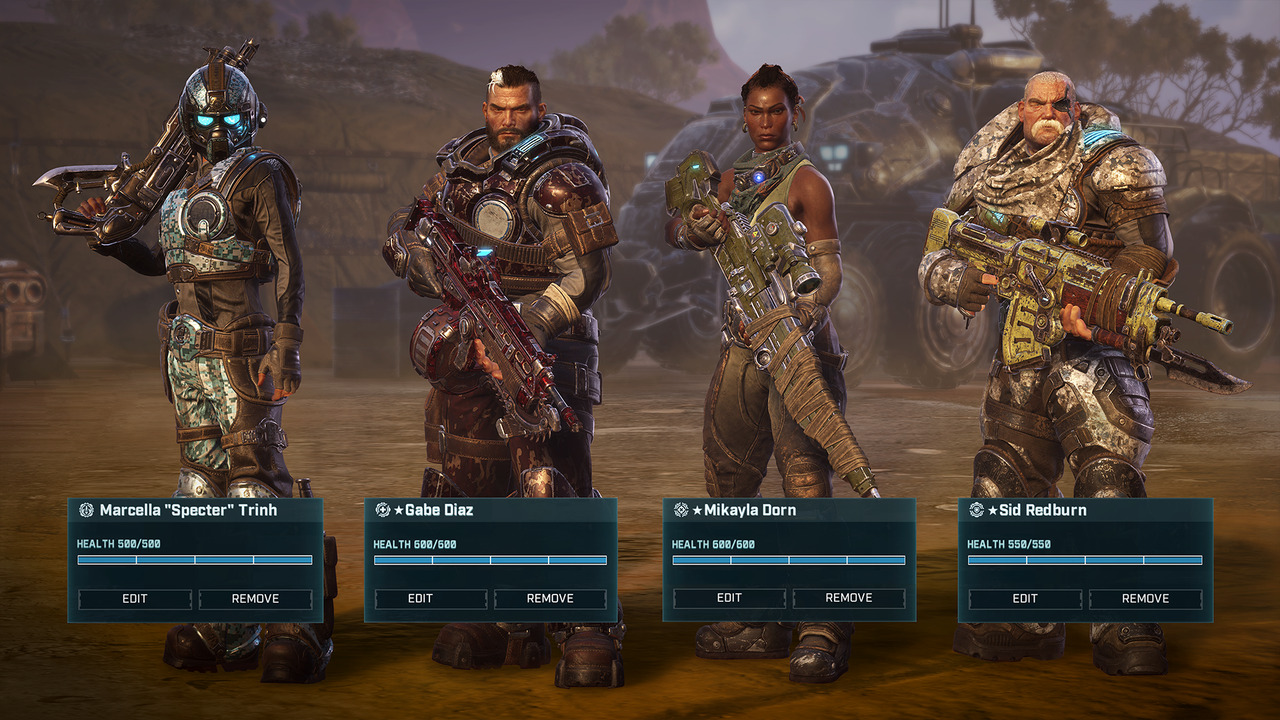


Secondly, this element of randomness makes you equally follow all the fighters, pay attention to each class and constantly experiment with the tactics, capabilities of each hero and the composition of the squad for the mission, making the gameplay more diverse. First, there is no shortage of equipment. The solution, frankly speaking, is extremely strange, but does not spoil the overall impression of the game. Each chest contains one piece of equipment of the corresponding grade. New equipment can be obtained for completing missions and from containers that are awarded for completing additional mission conditions – no microtransactions! The containers are divided into grades (from common to legendary). This is especially felt in the battles with local bosses – there are three of them in the game and meeting each of them becomes a real test. That is why Gears Tactics is all about quickly destroying opponents.Īfter all, if you delay, you can find yourself surrounded by many enemies, who in just one move can destroy your squad. And some opponents are in no way inferior to the squad of Gears: they also hide behind covers, actively use the “Observation” mode, trying to limit the actions of the heroes, and punish for the slightest mistake. Waves of enemies are constantly arriving. The battles in the game are very dynamic. Gears Tactics is focused on fast-paced action as fast as it can be in turn-based games. The shooting itself also feels more better than in XCOM: it is almost impossible to miss while standing next to the target, as well as with a hit probability of 90% and higher, and even with a 60-70% chance, shots reach the target more often than they miss.Īt first glance, it may seem that all these changes significantly simplify the game, but this is not the case.

Each hero has three action points per turn, which can be spent as you like or not spent at all: for example, you can activate the “Observation” mode at the very beginning of a soldier’s turn, and then during the enemy’s turn he will shoot at the enemies that are in his field of vision, three times. In Gears Tactics, fighters move freely around locations, since the latter are not divided into cells.

But then the differences begin, advantageous against the background of Firaxis’ creations. The number of actions per fighter’s turn is limited, almost all abilities have a cooldown, and the probability of hitting the enemy still depends on various factors: for example, the presence of cover or the distance to the target. Each fighter has his own class with a unique set of skills – there are five classes in the game: scout, vanguard, heavy infantry, sniper and support. A squad of several fighters (from 1 to 4) is sent on tasks. GameplayĪs a turn-based tactic game, Gears Tactics most closely resembles the modern XCOM dilogy. Half of the game you feel like you are playing boring slot machines and not the great gambling games on Bgaoc. Secondly, all this greatly affects the pace of the narrative, which sags in the third act, when, in fact, before the final battle, you have to carry out monotonous assignments for a long time, as if preparing for a fight and farming resources. And after a dozen hours you complete them near automatically.


 0 kommentar(er)
0 kommentar(er)
